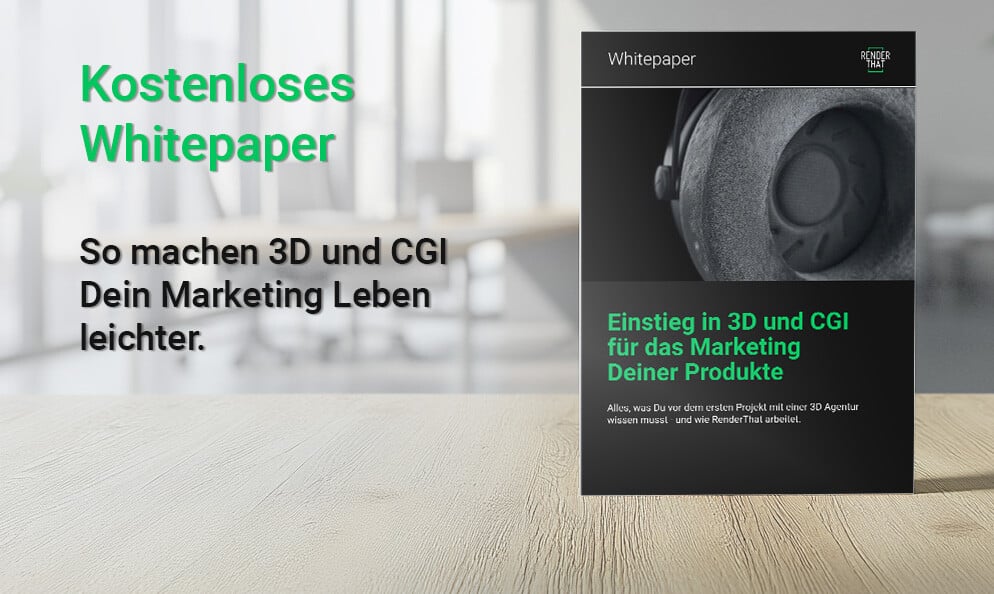Digital twin in production: benefits and applications

In modern industry, particularly in the context of Industry 4.0, the digital twin in production, has an enormous impact on the efficiency and competitiveness of companies. A digital twin is an exact virtual representation of a physical object, a machine, or an entire production system. This digital representation enables companies to simulate and optimize processes and identify problems at an early stage. In this blog post, you will learn what advantages and specific applications the digital twin offers, in particular for production, sales and marketing.
Digital twin: definition and differentiation
A digital twin is the digital copy of a physical object or system that is fed with data in real time to monitor and optimize processes. The term is used in various areas, but it is important to distinguish between applications in production and those in Sales and marketing to differentiate. While production focuses on optimizing machines and processes, sales and marketing departments use the digital twin to realistically visualize products and give potential customers detailed insights into the product even before it physically exists.
The digital twin offers significant advantages, especially for companies that rely on photorealistic visualizations. Thanks to modern technologies, products and technical systems be perfectly presented in sales. This approach makes it easier to communicate complex product details and strengthens the purchase decision through impressive 3D visualizations, such as those found in RenderThat for technical systems are offered.
Benefits of the digital twin for production
The introduction of the digital twin in production offers numerous advantages. In manufacturing and plant engineering in particular, it helps to improve processes, reduce costs and improve product quality.
Improving product development and quality
By being able to virtually test and optimize products, companies can shorten development cycles while increasing the quality of the products. The digital twin makes it possible to carry out simulations of load tests, material properties and production processes before the actual product is physically manufactured. This leads to better results and higher satisfaction among end customers, as errors are identified and corrected at an early stage.
Optimizing production processes and machine maintenance
Another advantage of the digital twin is the optimization of production processes. By analyzing real-time data from production, processes can be continuously monitored and improved. In addition, the digital twin enables predictive maintenance strategies. It detects potential problems with machines and production plants before expensive failures occur. This preventive maintenance reduces downtime and extends the life of the machines.
Increasing efficiency through the digital twin in production and sales
The central strength of the digital twin lies in its ability to efficiency to significantly increase both in production and in downstream sales and marketing processes. Here are some key factors that help improve efficiency:
- Faster decision making with real-time data: By continuously monitoring production data in real time, companies can react faster to problems and make well-founded decisions. This not only speeds up the production process, but also reduces the likelihood of errors.
- Reduce errors and rework: Since the digital twin enables simulations and predictions of production processes, potential errors are identified at an early stage. This reduces the need for rework, which in turn saves costs and shortens production time.
- Optimized resource planning: By simulating production processes, resource planning can be significantly improved. Companies can calculate exactly when and how much material is needed to avoid production bottlenecks and minimize waste.
- Predictive maintenance: The digital twin detects anomalies in machines and systems before they lead to major problems. This enables proactive maintenance and minimizes downtime. At the same time, maintenance costs are reduced and machine availability is maximized.
- Efficiency in sales and marketing: The digital twin is also increasingly being used in sales and marketing. Products can be realistically visualized and presented right from the development phase. This not only shortens time to market, but also improves customer interaction. Through detailed and interactive product visualizations, companies can market their products more convincingly and efficiently.

An example of application in Sales and marketing Is the use of the digital twin for photorealistic visualizations of products. Companies can 3D display their products before they are physically manufactured. This speeds up the sales process significantly, as customers can realistically experience the product without actually holding it in their hands. For example, a product manager can decide at an early stage what the final product will look like and how it can best be marketed. A helpful example can be found at renderThat to have a 3D model created.
Benefits of the digital twin for sales and marketing
In addition to production, the digital twin plays a decisive role in sales and marketing. By being able to virtually represent and interactively present their products, companies improve communication with their customers and strengthen the sales process.
Digital twin for more effective product presentation
One of the biggest strengths of the digital twin is the ability to display products in a photorealistic environment even before they are actually produced. This offers enormous advantages, particularly for sales and marketing. Potential customers can look at products from every angle, test features, and explore tailored variants without the need for physical samples. These interactive, digital product presentations significantly shorten the sales cycle.
Individualized customer solutions through the digital twin
With the help of the digital twin, companies can respond to the specific needs of their customers and present individual product solutions. This is particularly important in B2B business, where tailor-made solutions represent a decisive competitive advantage. By using the digital twin, companies can simulate individual customer requirements and create tailor-made offers. You can find a detailed example in our article about Content marketing for mechanical engineering.
For manufacturers of technical equipment and suppliers of technical products, there are two additional points that make content marketing as a discipline exciting for sales: The products often require explanation and, on the other hand, target groups as well as B2C customers travel online to find out more. You should definitely use these facts to reach buyers. There is a detailed description of this here Guide to content marketing for technical products.
Make yours Product digitization more efficient
We help companies digitize product portfolios with hundreds of items. Our workflows are tailored to your company and ensure maximum output with minimal effort.






